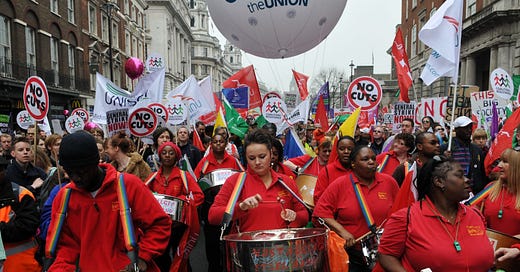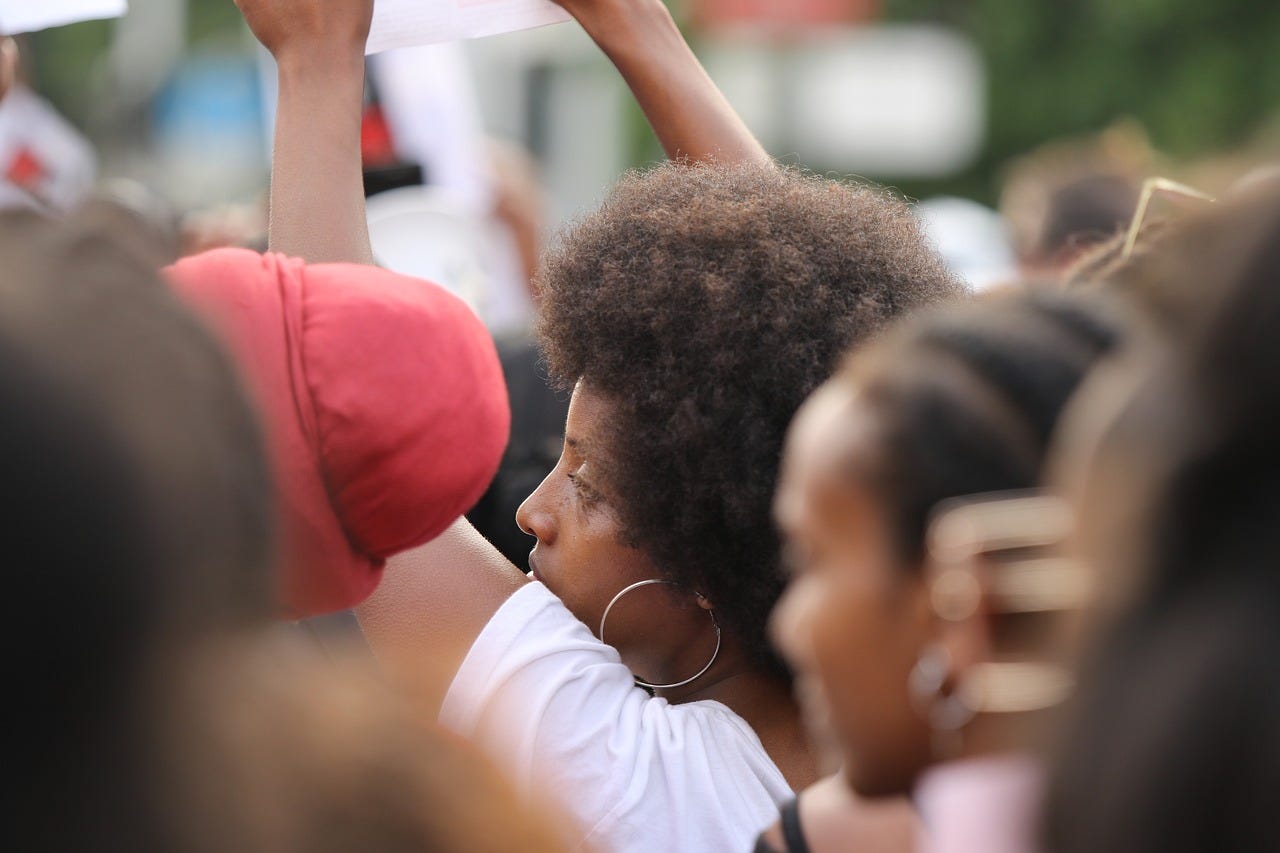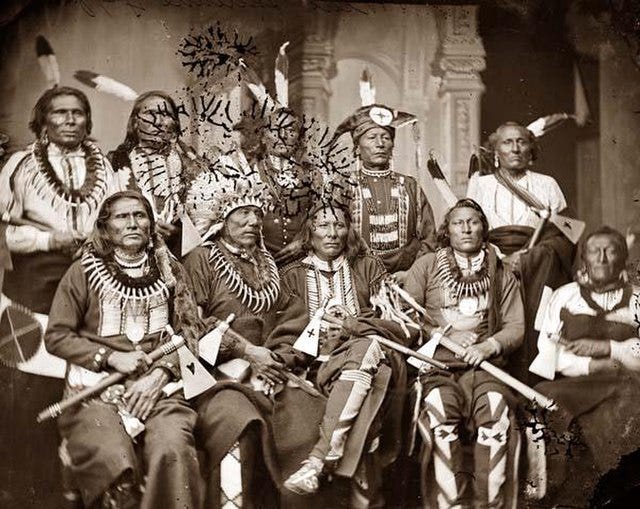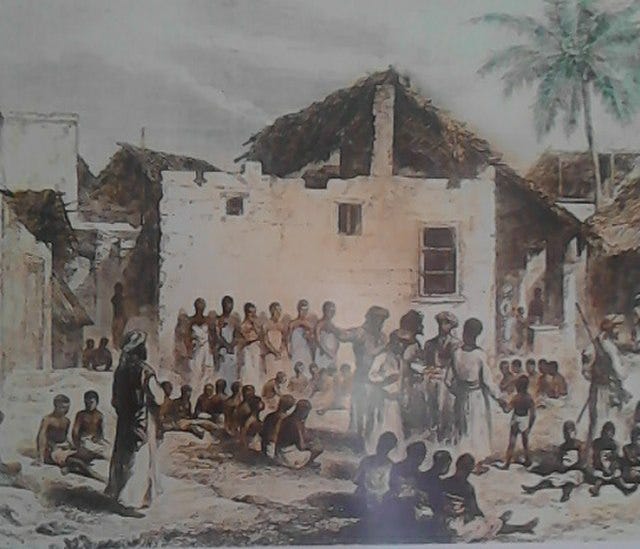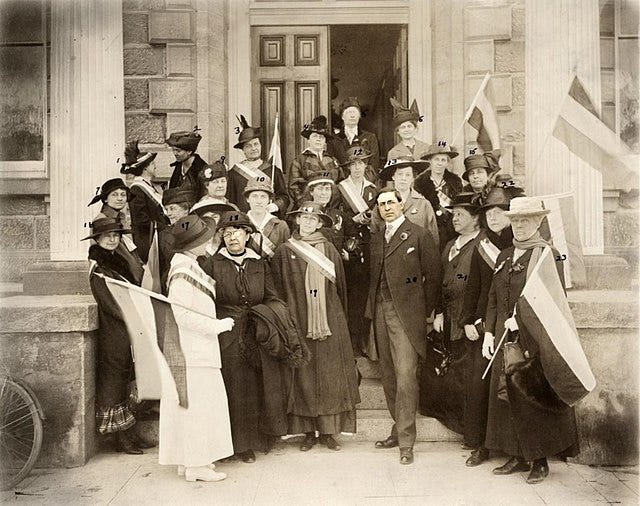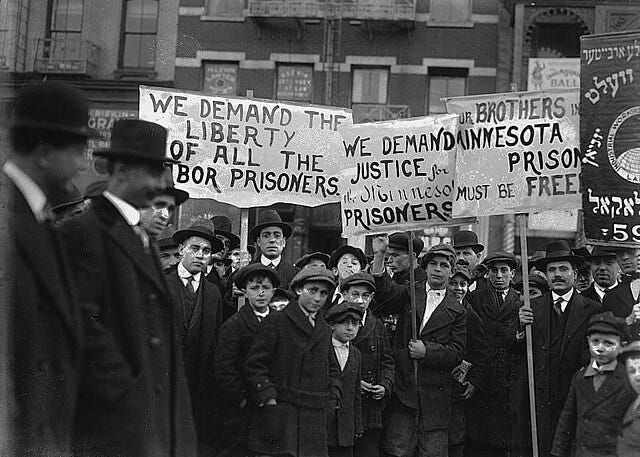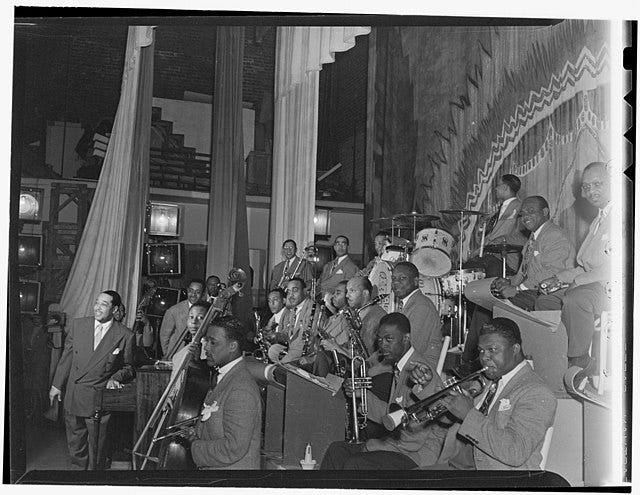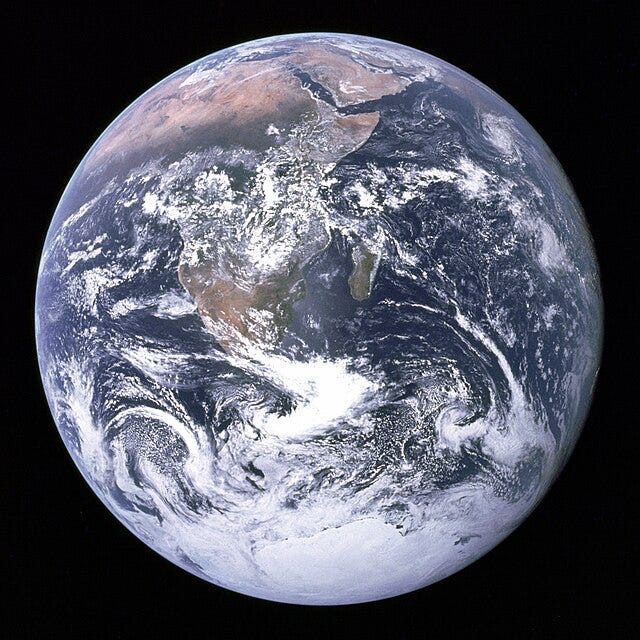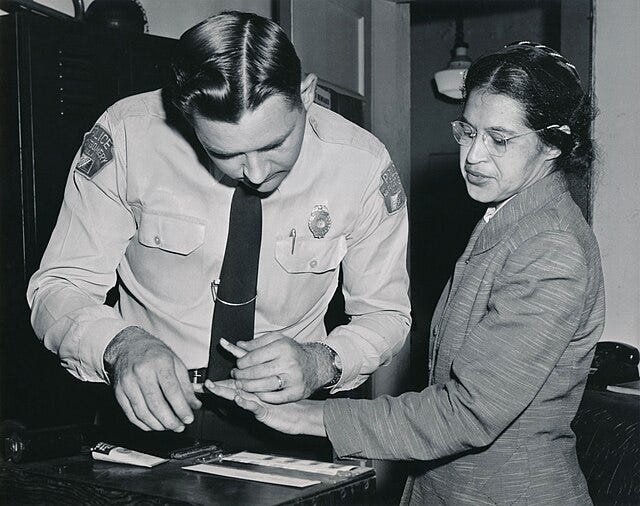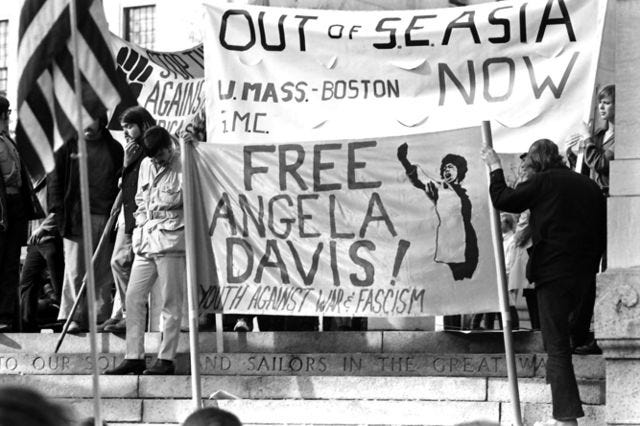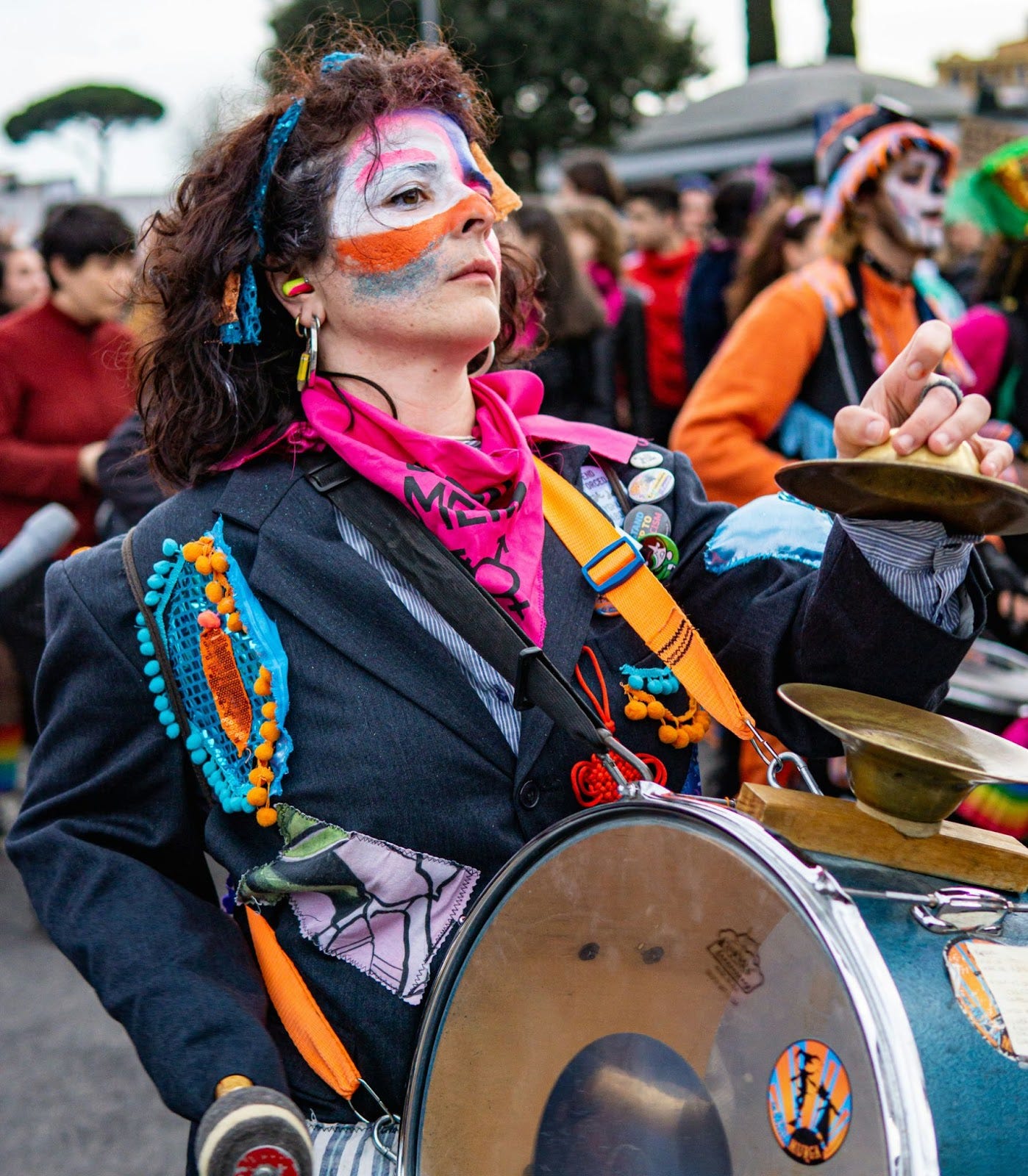Resistance Anthems: Protest Music for Hard Times
Let’s Unite Our Voices For Justice Through the Power of Music!
Photo by 1000 Words via Shutterstock
Music has always been more than just entertainment; it is a potent force for social change. From the revolutionary songs that fueled uprisings to the anthems of solidarity that shaped resistance movements, protest music has been a powerful tool for challenging oppression and inspiring hope.
Whether sung in the streets, streamed to headphones, or played in quiet homes, these songs provide a collective voice that transcends individual struggles, uniting people across cultures and generations. This article delves into the rich history and enduring power of protest music, exploring how it serves as mutual aid—empowering communities, amplifying movements, and fostering resilience in the face of injustice.
Music in Human Life
Music has an unparalleled ability to convey emotion, foster solidarity, and create cultural memory. In times of hardship, protest songs become shared anthems, embodying the hopes and frustrations of movements for justice and human rights. The importance of music extends beyond mere entertainment; it provides psychological refuge and strengthens resilience.
Historically, enslaved Africans in the U.S. used spirituals as coded messages to communicate escape routes and strategies, turning music into an instrument of liberation. Similarly, labor movements in the early 20th century relied on songs like "Solidarity Forever" to forge unity among workers. From the civil rights era to contemporary environmental and social justice movements, music remains a potent tool for building community and defying authoritarianism.
Indigenous Resistance Music
“Native American Chiefs 1865” via Wikimedia
Indigenous resistance music has been a key tool in the fight against colonization and cultural erasure. For centuries, Indigenous peoples have used music to assert their identities and resist cultural erasure.
Traditional songs, often tied to spiritual practices, maintained cultural continuity despite the violence and colonial practices like boarding schools and family separation. These songs preserved languages, stories, and ceremonies while defying efforts to erase First Nations’ ways of life.
In modern times, Indigenous musicians continue to use music to raise awareness about land rights, environmental justice, and colonial impacts. Artists like Buffy Sainte-Marie, A Tribe Called Red, and Midnight Oil blend traditional sounds with genres like hip-hop and electronic music to address issues like pipeline opposition and sacred land preservation. Music remains a vital tool for reclaiming cultural heritage and resisting systemic injustice.
“They got these energy companies that want the land
And they've got churches by the dozen who want to
Guide our hands
And sign Mother Earth over to pollution, war and greed”
“Said to us, "Come, take our hand"
Set us up on mission land
Taught us to read, to write and pray
Then they took the children away”
“How can we dance when our earth is turnin'?
How do we sleep while our beds are burnin'?
How can we dance when our earth is turnin'?
How do we sleep while our beds are burnin'?”
Songs of Freedom
“Slave Market at Ujiji” by Lueebo via Wikimedia
Music was crucial for Black slaves in the U.S., helping them survive oppression and maintain cultural identity. Spirituals like "Go Down Moses" and "Swing Low, Sweet Chariot" carried messages of hope, often using coded language to reference escape routes.
Work songs synchronized labor, built community, and allowed slaves to express frustration and resilience. Drumming traditions, even when prohibited, served as a form of communication and spiritual connection.
Music also played a role in organizing uprisings, such as the Stono Rebellion, and influenced genres like blues, jazz, and gospel in post-slavery America. It was a vital tool for survival, resistance, and cultural preservation.
Enslaved Black folk often sang with Christian imagery as that didn’t upset the planters and overseers too much. While African animist practices were suppressed, Christianity has an older history in Africa than it does in Europe.
“I looked over Jordan and what did I see
Coming for to carry he home
A band of angels coming after me
Coming for to carry me home”
“Go down Moses
Way down in Egypt land
Tell old Pharaoh
To let my people go!
Oh when Israel was in Egypt land
Let my people go!
Oppressed so hard, they could not stand
Let my people go!”
“Nobody knows the trouble I've seen
Nobody knows but Jesus
Nobody knows the trouble I've seen
Glory, Hallelujah”
Tunes to Fight For Women’s Rights
Suffrage Special Women via Wikimedia
The music of the women’s rights movement has been a powerful tool for raising awareness and expressing solidarity. From the early suffrage movement to modern feminist movements, women have used music to challenge gender inequality.
In the early 20th century, suffragists in the U.S. and UK composed anthems like "The March of the Women" to rally support for voting rights. These songs symbolized women’s strength in the fight for change.
In the 1960s and 70s, the feminist movement saw anthems like "I Am Woman" by Helen Reddy and feminist punk bands like The Slits and Bikini Kill challenging patriarchal norms. Music remains a vital tool for advocating gender equality, with artists like Beyoncé and Lady Gaga continuing to amplify women’s voices.
“Life, strife, these two are one,
Nought can ye win but by faith and daring:
On, on that ye have done,
But for the work of today preparing.
Firm in reliance, laugh a defiance,
(Laugh in hope, for sure is the end)
March, march, many as one.
Shoulder to Shoulder and friend to friend.”
“I am woman, hear me roar
In numbers too big to ignore
And I know too much to go back an' pretend
'Cause I've heard it all before
And I've been down there on the floor
And no one's ever gonna keep me down again”
“Oh, have you looked in the mirror lately? (lately)
Wish you could trade eyes with me ('cause)
There's complexities in complexion
But your skin, it glow like diamonds
Dig me like the earth, you be giving birth
Took everything in life, baby, know your worth”
Music of the Labor Movement
Photo by The Library of Congress via Wikimedia
Music has been integral to the labor movement, uniting workers and advocating for their rights. Early 20th-century songs like "The Internationale" and "Solidarity Forever" became anthems of collective struggle for better working conditions and fair wages. Folk musicians like Woody Guthrie and Pete Seeger used their music to critique capitalism and support labor causes.
Throughout the 20th century, union songs and the folk revival strengthened workers' movements, with groups like The Almanac Singers promoting unity. Today, artists like Bruce Springsteen and Ani DiFranco continue to support workers’ rights, reminding us of the power of collective action.
“In our hands is placed a power greater than their hoarded gold
Greater than the might of armies, magnified a thousand-fold
We can bring to birth a new world from the ashes of the old
For the union makes us strong”
“There was a big, high wall there that tried to stop me
A sign was painted said "Private Property"
But on the backside, it didn't say nothing
This land was made for you and me”
“Don't scab for the bosses
Don't listen to their lies
Us poor folks haven't got a chance
Unless we organize”
Bebops of the Harlem Renaissance
Photo by Gottlieb, William P. via Wikimedia
The Harlem Renaissance of the 1920s was a key moment for Black music, with jazz, blues, gospel, and spirituals reflecting the struggles and triumphs of African Americans. Jazz, led by artists like Duke Ellington and Louis Armstrong, became a symbol of cultural pride and resistance, blending African rhythms and European influences.
Blues and gospel music also played significant roles, with figures like Ma Rainey, Billie Holiday, and Sister Rosetta Tharpe expressing emotional depth and hope. These genres asserted Black identity and resistance, shaping American music and contributing to the broader Black empowerment movement.
“Southern trees bear a strange fruit
Blood on the leaves and blood at the root
Black bodies swinging in the Southern breeze
Strange fruit hanging from the poplar trees”
“You must take the "A" train
To go to Sugar Hill way up in Harlem
If you miss the "A" train
You'll find you missed the quickest way to Harlem”
“Rivers I have seen and rivers I have known
Ancient than the world and older than the blood
I've known rivers, I've known rivers”
Melodies for Mother Earth
Photo by NASA via Wikimedia
Music has been a key part of environmental movements, raising awareness about issues like pollution, deforestation, and climate change. In the 1960s, folk artists like Bob Dylan and Joan Baez began addressing ecological concerns, with songs like Joni Mitchell’s “Big Yellow Taxi” highlighting the destruction of natural spaces. Music fostered urgency and unity, amplifying calls for environmental action.
Today, artists like Pearl Jam, Radiohead, and Billie Eilish continue to use their platforms to support environmental causes through benefit concerts, eco-friendly touring, and songs advocating for sustainability and conservation. Music remains a powerful tool for inspiring environmental change.
"By the time that I had died
Poison swept every land and tide
No one left to testify.”
“Only way through is colonization
Acclimatization, population exodus
Monetization, civilization
The operation has begun
There is no Planet B
“We've got a president we didn't elect
The Kyoto treaty he decided to neglect
And still the US just wants to flex
Keep doin' that wop we gonna break our necks”
The Soundtrack of Civil Rights
Photo by Gene Herrick via Wikimedia
Music was central to the Civil Rights Movement, offering resistance and inspiration in the fight against racial injustice. Spirituals, gospel, and blues became tools for expressing struggle and hope, with songs like "We Shall Overcome" uniting and uplifting protesters. These songs carried messages of perseverance, reinforcing belief in change despite overwhelming odds.
Artists like Nina Simone, Sam Cooke, and Mahalia Jackson also used their music to challenge racism. Songs like Simone’s "Mississippi Goddam" and Cooke’s "A Change Is Gonna Come" expressed anger and hope. Music played a crucial role in organizing and uniting people, leaving a lasting legacy in contemporary activism.
“Picket lines
School boycotts
They try to say it's a communist plot
All I want is equality
For my sister, my brother, my people, and me”
“It's been too hard living
But I'm afraid to die
'Cause I don't know what's up there
Beyond the sky”
“Oh, deep in my heart
I know that I do believe
We shall overcome, someday
Vietnam Era Vibes
Photo by Nick DeWolf via Wikimedia
Protest music from the Vietnam era became a key form of resistance against U.S. involvement in the war. In the 1960s and 1970s, as public opposition grew, folk and rock music, including songs like “Fortunate Son” and “Give Peace a Chance,” expressed frustration and galvanized action against the conflict.
Artists like Bob Dylan, Joan Baez, and Phil Ochs used their music to reflect the emotional toll of the war and show solidarity with soldiers and civilians. These protest songs became rallying cries for peace, leaving a lasting legacy in shaping future activism and demonstrating music's power in challenging injustice.
“What you want, baby, I got it
What you need, do you know I got it?
All I'm askin' is for a little respect”
“Said, said, said, I remember when we used to sit
In the government yard in Trenchtown,
Oba - obaserving the 'ypocrites
As they would mingle with the good people we meet.”
“Let me tell you now
Ev'rybody's talking 'bout
Revolution, evolution, masturbation, flagellation, regulation, integrations
Meditations, United Nations, congratulations”
Modern Sounds of Dissent
Modern protest music continues the tradition of using song as a powerful tool for social and political change, addressing a broad spectrum of contemporary issues, from racial injustice and gender rights to economic inequality and global conflict. Artists from various genres have used their platforms to challenge systemic oppression and amplify marginalized voices.
For example, "Alright" by Kendrick Lamar has become a defining anthem for the Black Lives Matter movement, embodying the resilience and hope of Black communities in the face of police violence and racial discrimination. Similarly, “This Is America” by Childish Gambino starkly critiques violence, racism, and the exploitation of Black bodies, urging listeners to confront uncomfortable truths about American society.
Songs like Tracy Chapman's "Talkin' 'bout a Revolution" and Prince's "Baltimore" also serve as calls to action, encouraging solidarity and resistance in the face of social inequities. Rage Against the Machine's incendiary tracks, like "Killing in the Name," bring a fierce critique of political corruption and institutionalized violence. The Chicks' "Not Ready to Make Nice" is a passionate declaration of defiance, challenging the backlash outspoken individuals face in the public eye.
En Vogue's "Free Your Mind" urges listeners to reject stereotypes and embrace equality, while Tupac’s “Changes” reflects the deep struggles of marginalized communities, offering a poignant look at the cycle of poverty, violence, and systemic racism. Similarly, The Cranberries' "Zombie" is a haunting commentary on the violence and division caused by political conflict, particularly in Northern Ireland. These songs, through their bold lyrics and emotional power, continue to inspire resistance and reflect the ongoing fight for justice in the modern world.
“This is America (skrrt, skrrt, woo)
Don't catch you slippin' now (ayy)
Look at how I'm livin' now
Police be trippin' now (woo)
Yeah, this is America (woo, ayy)
Guns in my area (word, my area)”
“I know you've said
"Can't you just get over it?"
It turned my whole world around
And I kinda like it”
“What you want you, a house? You, a car?
Forty acres and a mule? A piano, a guitar?
Anything, see my name is Lucy, I'm your dog
Motherf*cker, you can live at the mall”
Final Thoughts
Photo by Leonardo Basso on Unsplash
As the struggles for justice and equality continue to unfold across the globe, protest music remains a vital thread that connects the past with the present. It reminds us that the fight for liberation is not a solitary endeavor but a collective one, rooted in the shared rhythms of solidarity, resistance, and hope.
From the sounds of Black liberation to the fierce anthems of Indigenous resistance, music has been and will continue to be a source of strength, comfort, and empowerment. In hard times, it is through song that we find the courage to resist and the belief that, together, we can create a better world.
Beyond Darwinism - Mutual Aid Index
Beyond Survival of the Fittest: Kropotkin's Vision of Mutual Aid
What is the role of solidarity and reciprocity in building equitable and sustainable communities?
Mutual Aid Among Plants and Animals: Cooperating for Survival
Peter Kropotkin Observes How Cooperation Among Species Improves Survival and Shapes Evolution.
Frolics and Barn-Raisings: Mutual Aid Amongst the Amish
Take a Look at the Amish Traditions of Collective Action and Solidarity.
The Arab Spring: Mutual Aid in the Fight for Freedom
See Solidarity in Action with the Collective Struggle for Liberation in the Arab Spring Movements.
The Black Panther Party’s Legacy of Community Empowerment Through Mutual Aid
The BPP protected and served their communities despite rampant racism and being the main targets of the FBI’s Counter-Intelligence Program.
Blessing Boxes: Mutual Aid in Our Communities Today
Find Out How These Simple Free Community Pantries Transform Neighborhoods and Promote Solidarity.
Childcare Collectives: A Modern Expression of Mutual Aid
Childcare Collectives develop when families, friends, and neighbors pool their resources to raise children.
Feeding Hope: The Impact of Community Fridges as Mutual Aid
See How Grassroots Efforts Like Chattanooga’s Hope Community Fridge Transforms Food Access and Fights Food Apartheid.
Grow Food Together: The Impact of Community Gardening as Mutual Aid
Shared Gardens Enhance Food Security, Build Community Bonds, and Promote Well-being Without Personal Expense.
Community Self-Defense: Protecting Ourselves and One Another
Let’s Talk About How Communities Work Together to Protect Themselves From Harm Inflicted by the State and Fascists.
Community Workspaces: Where Coworking Meets Opportunity
Find Out How Shared Community Workspaces Support Creativity and Mutual Empowerment.
Deciding Together: The Consensus Model in Mutual Aid
How Collective Decision-Making Builds Strong and Resilient Movements As Shown by Occupy Wall Street.
Live Together, Thrive Together: Shared Housing as Mutual Aid
Imagine Housing as a Way to Build Community and Share Resources.
Breaking Bread, Building Bonds: What’s Cooking in Community Kitchens?
Learn How These Shared Kitchens Create Lasting Change Through Healthy Meals, Cooking Education, and Mutual Aid.
Migration and Mutual Aid: Navigating a Climate Crisis Together
The USA and Global North Grew Rich Burning Fossil Fuels. Radical Cooperation Can Help Us Adapt to a Changing World.
Forgive Us Our Debts: How Debt Collective Helps Abolish Financial Servitude
Debt Collective Branched Off From Occupy Wall Street and Unifies Debtors in Mutual Aid for Collective Liberation.
Thou Doth Protest? How The Diggers Reclaimed the Commons and Fought Early Capitalism
Learn About the Radical Solidarity and Resistance to the Enclosure of the Common Lands in 17th-Century England.
A World Without Barriers: Consider Accessibility in Mutual Aid
Everyone Becomes Disabled if They Are Lucky. So How Can We Make Our World More Accessible?
Mutual Aid in the Eye of the Storm: Disaster Relief Amid Climate Change
When Disaster Strikes, Mutual Aid Responds: A Blueprint for Resilience Amid More Frequent Catastrophes
Beyond the Ballot Box: Build Dual Power for Real Change
Empower People Through Mutual Aid, Solidarity, and Community Control.
Communities of Care: How Solidarity Transforms Support for Elders and the Differently-Abled
How Can Mutual Aid Principles Change Elderly and Disabled Care From Isolation to Connection?
Growing Resistance: How Food Forests Feed Communities for Free and Defy Capitalism
From Commodities to Commons: The Radical Potential of Agroforestry
Roots of Resilience: Black Mutual Aid Societies in American History
Explore W.E.B. Du Bois’ Work and the Heritage of Solidarity Among Black Folk.
From Despair to Dignity: The Radical Work of Free Clinics
How Mutual Aid and Community Solidarity Transform Access to Healthcare
Feeding Each Other: The Radical Power of Free Grocery Stores
How This Kind of Mutual Aid Transforms Hunger Relief into Community Empowerment
Challenge Capitalism One Free Store at a Time
How Free Stores Empower Communities and Challenge Scarcity
The Past & Future of Self-Governance: How General Assemblies Build Dual Power
Strengthen Communities Through Direct Democracy and Mutual Aid
Let Joy Guide You: The Power of Fun in Change Work
Explore the Role of Laughter, Creativity, and Connection in Community Organizing
Fascism Unmasked: How to Recognize and Resist Modern Authoritarianism
Empower Your Resistance: A Practical Guide to Revolutionary Optimism, Mutual Aid, and Defying Totalitarians
Resist Burnout: Care, Coping, and Wellness in Dark Times
How can we practice self-care to endure the revolutionary marathon and better support one another?
Resistance Anthems: Protest Music for Hard Times
Let’s Unite Our Voices For Justice Through the Power of Music!
Affinity Groups: Decentralized Resistance in an Age of Crises
How Do Small, Autonomous Collectives Build Power and Resistance Against Fascism, Capitalism, and Collapse?
Share a Feast: How Potlucks Build Community and Connection
Let’s Discuss How Sharing Food Nourishes Both Bodies and Bonds Across Generations.
Notes From the Underground: How Forests Teach Mutual Aid
How Do Fungi, Trees, and Other Plants Thrive Through Cooperation and Reciprocity?
Fight Book Bans with Little Free Libraries
How Do Little Free Libraries Turn the Tide Against Book Bans and Censorship?
Read, Rest, Revolt, Repeat: Study Groups as Mutual Aid
How Does Collective Study Build Power, Sharpen Strategy, and Sustain Movements?
Burn After Reading: Comms Discipline for Mutual Aid and Resistance
Think About Encryption, VPNs, Walkie-Talkies, and the Lost Art of Keeping Your Mouth Shut.

